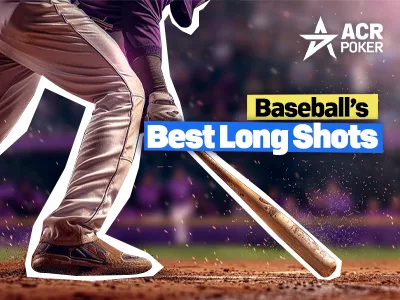Why the Baseball Diamond Breeds Underdog Success
Major League Baseball possesses a unique set of structural and statistical characteristics that differentiate it from other major sports. These inherent qualities, from the length of the season to the nature of the game itself, create a fertile environment for underdog victories. For bettors seeking value, this makes MLB a premier sport for underdog betting. The high level of variance and the impact of individual matchups mean that on any given day, any team can defeat any other, regardless of their standing in the league.
The Mathematical Advantage of High Variance
The core of baseball’s suitability lies in its pronounced variance. Even the best teams lose around 60 games a season, while the worst teams still win roughly 60. This frequency of unexpected outcomes is not a flaw but a feature of the sport. A single pitch can change the entire outcome of a game, and a hot pitcher can completely neutralize a powerful lineup. This built-in unpredictability is what creates consistent value opportunities, establishing MLB as a prime sport for underdog betting for those who analyze matchups beyond simple win-loss records.
The Great Equalizer: Starting Pitching Matchups
No single factor influences a single baseball game more than the starting pitcher. A team with a losing record that sends its ace to the mound is immediately a live underdog against a first-place team starting its fifth rotation member. This daily fluctuation based on pitching rotations is a fundamental aspect of baseball that does not have a direct equivalent in other sports. Analyzing these pitching duels, including recent performance, splits against certain handed hitters, and historical success against the opponent, is the most critical step in identifying a valuable sport for underdog betting.
The Long Grind of a 162-Game Season
The marathon nature of the MLB season directly contributes to underdog success. Teams deal with relentless travel, injuries, and stretches of poor form. A favorite might be playing its sixth game in seven days across three different cities, while an underdog could be returning home well-rested. Motivation also fluctuates; a team out of playoff contention playing loose can be exceptionally dangerous against a contender feeling the pressure of a pennant race. This constant ebb and flow of fatigue and incentive levels the playing field daily.
Key Statistical Indicators to Evaluate
Beyond the starting pitcher, several metrics can reveal an underdog’s true chance of winning. Bullpen strength is often a deciding factor in close games, and a weak starting pitcher backed by a dominant relief corps can keep a team in contention. Offensive metrics like weighted on-base average (wOBA) and isolated power (ISO) against a specific pitcher’s arsenal are more telling than overall batting average. For bettors, this depth of analysis is what makes it a rewarding sport for underdog betting.
Situational Spotting in Baseball
Specific game contexts historically favor underdogs. A team looking to avoid a sweep in the final game of a series often shows heightened focus and effort. Similarly, look-ahead spots, where a favorite might be distracted by an upcoming series against a key rival, present classic opportunities. Weather factors, like wind blowing out in a hitter-friendly park, can also neutralize a favorite’s advantage, making the underdog a more attractive proposition.
Implementing an Underdog Betting Strategy
A successful approach to MLB underdog betting requires discipline. The most logical method is often to focus on the moneyline, betting on the underdog to win outright, rather than worrying about a run line. This captures the full value of an upset. Furthermore, line shopping across different sportsbooks is essential, as even a slight difference in odds can significantly impact long-term returns. Consistently applying these principles allows one to leverage why baseball is a superior sport for underdog betting.
Managing the Inherent Variance
While the frequency of upsets creates opportunity, it also demands rigorous bankroll management. Even well-researched underdog bets will lose; variance is a core component of the strategy. Bettors must avoid chasing losses and adhere to a staking plan that allocates only a small percentage of their total bankroll to any single wager. Understanding that success is measured over the entire season, not daily, is the final key to capitalizing on MLB’s unique status as a premier sport for underdog betting.

